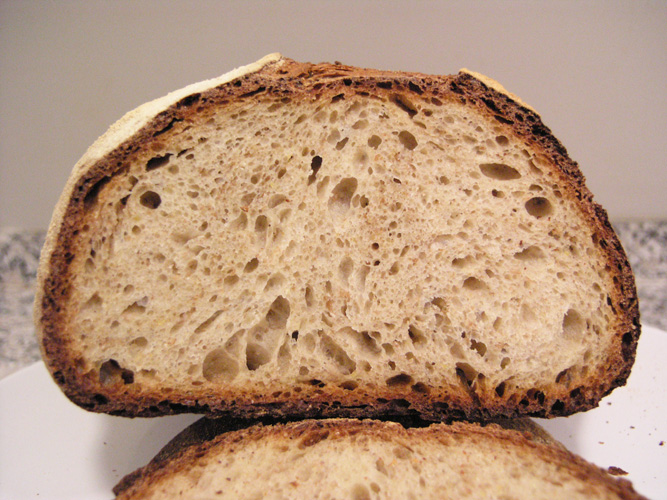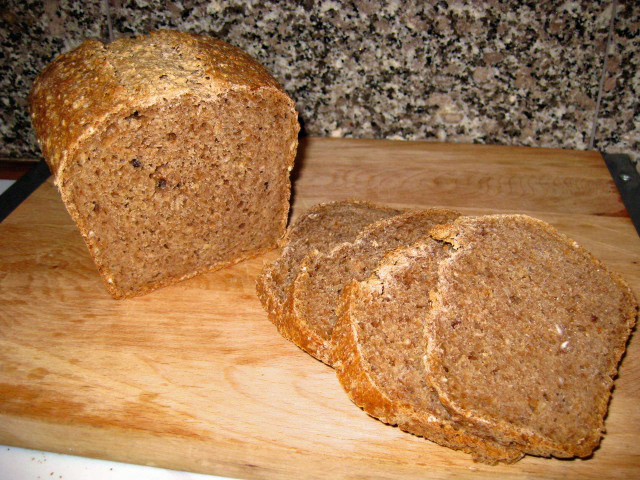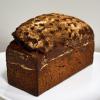Hey All,
Just wanted to tease you a bit. I don't have pictures yet, but here is the recipe for something I will call the "Everything Levain". I pretty much had all this stuff laying around in my kitchen, so I wanted to make a bread using all of it... Here is the recipe below. I will post pictures later this weekend.
Edit: So I finally cut into it. A friend whom I gave a loaf said the crust was too crusty, and the inside was a bit "dense"... My loaf, while it was very "crusty", I found the crumb to be pretty OK. As for the taste, it's pretty OK. There were so many things it it, that I can't really place any of the flavors individually... I prefermented 50% of the total flour, with most of it being the mixture of bits. Maybe next time I will preferment less, up the hydration, and bake it for a shorter amount of time... Overall, I am pleased with this "bold" bake... Enjoy!
Tim



3/16/10 - Everything Levain
Stiff Levain (60% Hydration)
440g - Bread Flour
70g - Rye Berries (freshly ground)
70g - Spelt Berries (freshly ground)
70g - Hard Wheat Berries (freshly ground)
70g - Millet (freshly ground)
70g - Jasmine Brown Rice (freshly ground)
70g - Cornmeal
70g - Graham Flour (Bob's Red Mill)
70g - 10 Grain Cereal (Bob's Red Mill)
600g - Water
100g - Firm Sourdough Starter (60% Hydration)
1700g - Total
Final Dough
750g - AP Flour
250g - Bread Flour
760g - Water
36g - Kosher Salt
¾ Tablespoon - Instant Yeast
1700g - Stiff Levain
Yield - 3500g dough
3/16/10
Stiff Levain
7:30pm - Grind all grains
7:50pm - Mix all with wooden spoon until combined, knead with wet hands until rough dough is formed, cover and let rest.
11:30pm - Knead into ball, transfer to oiled container, cover and let rest on counter.
3/17/10
1:00am - Transfer to refrigerator overnight.
8:30am - Turn dough, shape into ball, return to refridgerator.
3/18/10
12:52pm - Take levain out of fridge, place on counter and let rest.
1:00pm - Mix flour/water from final dough, place in oiled container and let rest/autolyse in refrigerator.
6:04pm - Take dough out of fridge. Measure out salt and yeast. Cut up stiff levain into pieces and place onto dough, sprinkle with salt and yeast, knead 5 minutes and rest for 30 minutes, covered.
6:50pm - Knead dough 1 minute, cover let rest for 30 minutes.
7:20pm - Turn dough, cover let rest.
9:00pm - Divide dough into 3 equal pieces, shape, place in linen lined basket, covered with towel. Proof for 90 minutes.
9:30pm - Arrange 2 baking stones on different levels, arrange steam pan, turn on to 550F with convection, preheat for 1 hour.
10:30pm - Turn off convection, place 1 cup of water in steam pan, close door. Turn boules out onto floured peel, slash as desired and load directly onto stone. After last loaf is in, add 1 more cup of water to steam pan, close door. Lower temp to 460F and bake 1 hr with no convection, rotating and shifting loaves between stones halfway through bake, lower to 430F for remaining half of bake. Loaves are done when crust is deep brown, and internal temp is 210F. Cool completely before cutting.













